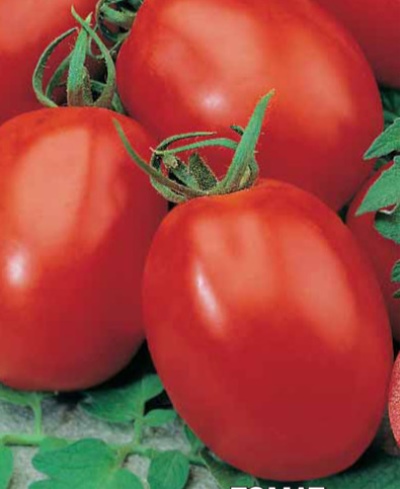
- Authors: Ognev V.V., Chernov A. Ya., Garmashova A.P., Trofimov S.N. (AGROFIRMA POISK LLC)
- Year of approval: 2004
- Category: grade
- Growth type: determinant
- Appointment: universal
- Ripening period: mid-season
- Ripening time, days: 100-110
- Growing conditions: for open ground, for film greenhouses
- Transportability: high
- Marketable fruit yield,%: 76-84
Getting a good harvest in dry summers and low rainfall is not an easy task. Adeline tomato is a real selection find, bred by AGROFIRMA POISK LLC in 2004. The hybrid is attractive not only for its taste, but also for its high resistance to adverse weather conditions such as prolonged drought.
Description of the variety
The bushes are low, the stem does not exceed 30-40 cm. Thanks to this, there is no need to carry out garter and pinching, as it belongs to the determinant varieties. Adeline has an average foliage, the leaves are colored green.
The variety is easy to care for. Even a novice summer resident is able to cope with this tomato. The main advantages are:
drought resistance;
high immunity to most diseases;
high yield rates;
unpretentiousness in growing and care;
can be grown both outdoors and in a greenhouse.
The main drawback of the culture is the intolerance of a large amount of moisture in the soil. Excess moisture leads to the development of fungal infections and the death of the plant.
The main qualities of the fruit
Fruits are small in size, the average weight of one reaches 70-95 g. They have an ovoid shape, popularly called "cream". The peel of the fruit is smooth, even, rather dense. The color of mature tomatoes is red. 2-3 fruits grow on one hand
Taste characteristics
The taste of Adeline tomatoes is sweet and sour, with a fleshy, juicy pulp. They make good stews, salads, pasta, meat sauces and dressings for first courses. The amount of dry matter is 4.8%.
Ripening and fruiting
Tomatoes begin to ripen 100-110 days after germination, it is considered a mid-season variety. Harvested from mid-July to late August. The ripening period is influenced by weather conditions - the hotter, the earlier.
Yield
A high-yielding tomato species. 3-4 kg of fruits are obtained from one bush, 31-47 tons can be harvested from a hectare. If grown in a greenhouse, the yield increases several times. The yield of marketable fruits is 76-84%. The harvested fruits lie well, do not lose their presentation during transportation.
The timing of planting seedlings and planting in the ground
Before you start sowing seeds, you need to carry out preliminary preparatory work. To obtain a good and strong seedling, seeds are sown 65 days before planting in open ground. And the age of the planting material should be at least 40-45 days, that is, the seeds begin to germinate in mid-March.
In the event that you are not sure that the manufacturer did not prepare the seeds and disinfect them, then these manipulations can be carried out on your own. To disinfect, the seeds are soaked in a weak solution of potassium permanganate for several hours, then they are washed with running water.
To activate biological processes, they are soaked in a special solution for a day. After they are left in a damp napkin for germination in a warm place. As soon as the seeds begin to hatch, start planting. You can grow in cups, a box or a greenhouse.
You don't have to resort to preliminary germination of seeds, but simply plant them, for example, in a greenhouse. However, germination can take several weeks and reduce their number.
Adeline is undemanding to the composition of the soil.Grows well on sandy loam and light loamy soils. But it is important to ensure that there is a sufficient amount of humus and nutrients in the ground. In open ground, seedlings are planted when there are at least 3 full leaves on the shoot, and not earlier than mid-May.
Depending on the climatic conditions of the region, the timing of planting in open ground may be different. The main thing is that the earth warms up to at least +15 degrees.

Growing tomato seedlings is an extremely important process, because it largely depends on whether the gardener can harvest at all. All aspects must be taken into account, from seedbed preparation to planting in the ground.
Landing scheme
The holes are made at a distance of 40-50 cm from each other, they are well moistened and fertilized with humus or compost. Since the plant is not sprawling, no more than 6-7 seedlings can be planted per square meter.

Growing and care
After planting, the first watering is carried out for 4-5 days. The culture responds positively to phosphorus-potassium fertilizers, which must be applied regularly. The bush usually does not give stepchildren, but this must be monitored. Their formation takes away nutrients from the seedling, which has a negative effect on the amount of fruit formation.
Additional mineral nutrition is stopped shortly before the tomatoes begin to sing. Loosening the soil and weeding are essential procedures to allow the plant to receive oxygen. Watering is moderate, as the soil dries up. The variety does not tolerate excessive moisture.




A plant needs different micronutrients at each stage of growth. All fertilizers can be divided into two groups: mineral and organic. Folk remedies are often used: iodine, yeast, bird droppings, eggshells.
It is important to observe the rate and period of feeding. This also applies to folk remedies and organic fertilizers.
Disease and pest resistance
The Adeline tomato has good immunity to most fungal infections and various types of rot. However, it manifests itself under the condition that the air temperature is high and low humidity. If spring and summer turned out to be rainy and cool, then the plant must be treated with special means in order to avoid the development of late blight.



























































































